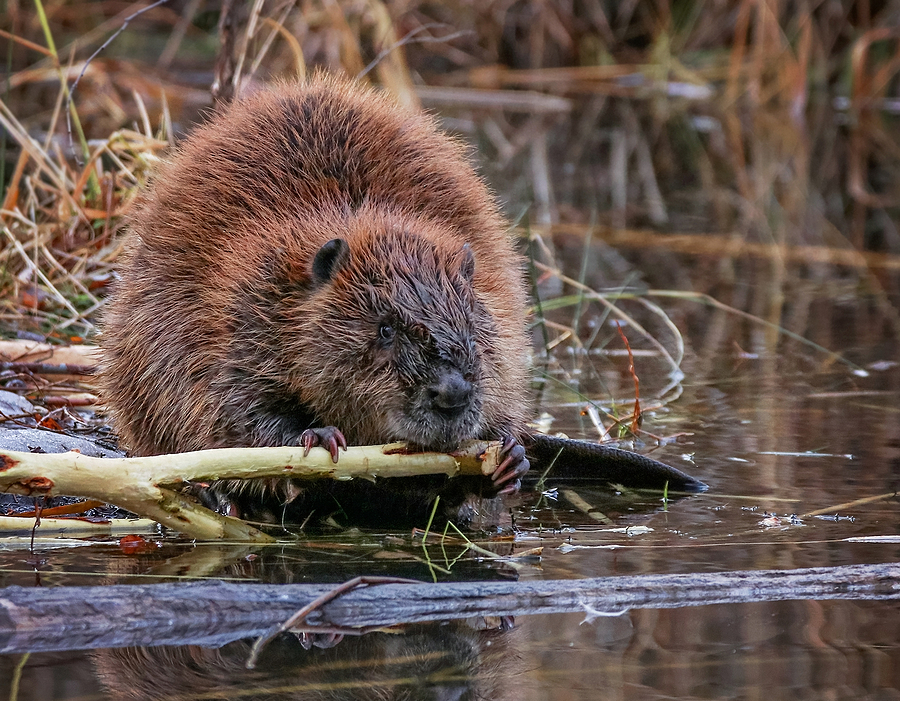Nature’s workings are intricate and fascinating, often hidden in the daily lives of creatures that we perceive to be ordinary. Among such creatures is the beaver, a remarkable animal blessed with the ability to significantly mold its habitat. Beavers are far more than just dam builders; they are pivotal contributors to environmental health and diversity, thus earning them the moniker of “Nature’s Ecosystem Engineers.”
This blog post dives deep into the world of beavers and their crucial role in our ecosystem, aiming to enlighten environmental enthusiasts, conservationists, and anyone enthralled by the wonders of nature.

A Beaver’s Life
Beavers are primarily aquatic mammals known for their impressive ability to transform landscapes to suit their needs. Their natural habitat spans across the North American and Eurasian continents, close to rivers and streams. These intelligent creatures have bodily adaptations such as webbed feet, water-repellent fur, and powerful tails that aid them in their semi-aquatic lifestyles.
Much of a beaver’s life revolves around water. In addition to providing them with protection from predators, water bodies are the linchpins of their survival and engineering works. Beavers are architects of their own environment, building elaborate lodges and dams that introduce remarkable changes to their surroundings.
Beavers as Ecosystem Engineers
As ecosystem engineers, beavers play a transformative role in the environment. Their dam-building activities create wetlands—ecologically rich habitats that serve as the lifeblood for diverse species, from fish to birds to plants. These newly formed waterways and ponds provide essential resources for other wildlife and create niches for various organisms to thrive.
The beaver’s ability to manipulate their habitat epitomizes the keystone species concept, illustrating how one species’ way of life can have a disproportionate impact on the structure of communities and the functioning of ecosystems—often boosting overall biodiversity.
Ecological Benefits of Beavers
The benefits of beavers extend far beyond biodiversity. In wetland ecosystems, beavers contribute to:
Water Conservation: Beaver dams slow down water flow, enabling groundwater recharge and maintaining water levels in times of drought.
Flood Prevention: By creating natural water barriers, beaver dams can help mitigate the impact of flooding events.
Water Quality Improvement: The wetlands filter out sediments and pollutants, leading to cleaner waters downstream.
Carbon Sequestration: Beaver ponds lock away carbon, contributing to the mitigation of climate change on a local scale.
These contributions underline the beaver’s environmental significance and our need to champion their conservation.
Coexisting with Beavers
The relationship between beavers and humans can be complex. While beavers bring myriad ecological benefits, they sometimes clash with human activities, particularly in urban or agricultural areas. In places like Tualatin River National Wildlife Refuge in Oregon, USA, beaver dams have enhanced local wildlife habitats, showcasing the immense potential within successful beaver-human coexistence.
Implemented strategies like the use of beaver deceivers—flow devices that maintain water levels while allowing beaver habitation—exemplify sustainable solutions for managing beaver-human interactions. For homeowners, property managers, and building owners, adopting such solutions can turn potential conflicts into conservation opportunities.
How to Safely Deal With Nuisance Beavers
Beavers can cause problems in areas where they are unwanted. Their burrowing activities and dam-building can lead to property damage, flooding, or conflicts with other land uses. However, there are humane ways to address these issues without resorting to lethal methods like trapping or relocation.
Fencing: Installing fencing around trees and structures can protect them from beaver activity. A fence with a smooth or slippery surface will make it difficult for beavers to climb over.
Tree Wrapping: Protecting young trees with wire mesh or plastic barriers can prevent beavers from gnawing on their bark, which is a vital food source for them.
Flow Devices: As mentioned earlier, flow devices like beaver deceivers can help manage water levels while allowing beaver habitation in the area.
Utilizing Habitat Modification: Altering the environment to make it less appealing to beavers can also be effective, such as removing food sources like nearby trees or debris.
Hiring a Professional Beaver Removal Service: Licensed wildlife control operators are trained and equipped to deal with nuisance beavers.
Conclusion
Beavers are much more than just charming creatures with big front teeth. They are essential players in our ecosystem, shaping landscapes and providing crucial resources for other wildlife. By understanding their behaviors and adopting sustainable solutions, we can ensure successful coexistence with these amazing animals.
By using the right techniques and applying proper prevention methods, you can ensure that your home is safe from damage caused by beavers. Start by contacting Budget Animal Removal at 317-875-3099 for DNR licensed and insured beaver removal and control in Indianapolis, Indiana, and surrounding counties. Request a free estimate or advice, today!
Related Posts:
All You Need to Know about Beaver Removal and Control
Be On the Lookout for Beaver Dam Problems This Fall
The Basic Facts You Want to Know About Beavers
